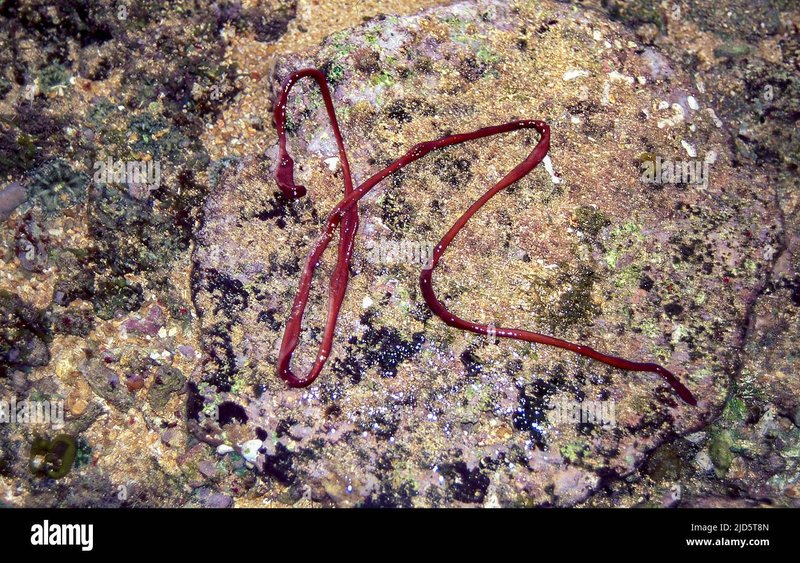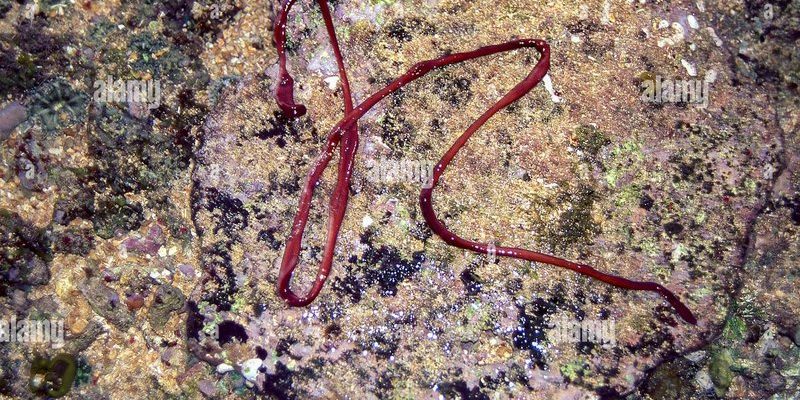
Now, ribbon worms belong to the phylum Nemertea and can be found across various coastlines. They often play an essential role in their habitats, acting as both predators and prey. So, if you’re curious about spotting these wiggle-worms on your next coastal adventure, let’s dive into the world of ribbon worms and explore how to identify them, where they live, and why they matter.
What Are Ribbon Worms?
Ribbon worms, or *Nemertea*, are long, slender animals that can range from just a few centimeters to more than thirty meters in length! They’ve got a unique, flattened body that often appears ribbon-like, giving them their name. Their bodies are usually soft and can come in various colors – think yellows, reds, and even greens. This vibrant coloration can help them blend into the seaweed or rocks, offering some protection from predators.
Here’s the thing: ribbon worms are not worms in the traditional sense. Instead, they belong to a different group altogether. They have a distinct body structure, featuring a proboscis—an extendable feeding tube that can shoot out to capture prey. You might be wondering how they use this; they often snatch small fish, crustaceans, and even other worms!
In terms of habitat, you can commonly find ribbon worms hiding in coastal rock pools, under rocks, or tucked away in sand burrows. Their preference for these environments is partly due to their need for moisture, as they can dry out quickly when exposed to air. So next time you’re exploring a rock pool, look closely—you may just spot one of these intriguing creatures.
How to Identify Ribbon Worms
Identifying ribbon worms in coastal rock pools can be quite an adventure. Here are the key features to look for:
- Body Shape: Look for long, thin, and flattened bodies. They may appear like long ribbons or strands, often wriggling around as they move.
- Color: Keep an eye out for bright colors! Ribbon worms can be vivid shades, which not only help them camouflage but also signal their presence.
- Proboscis: If you’re lucky, you might see their proboscis extending out as they hunt for food. This can be a telltale sign that you’re looking at a ribbon worm.
When observing these creatures, it’s essential to be gentle. Grabbing them too hard can harm their delicate bodies. Instead, if you see one, you can use a small container to gently lift it for observation. Watching them move can be captivating, like looking at nature’s very own aquatic ballet.
Common Types of Ribbon Worms
While there are over a thousand species of ribbon worms, let’s focus on a few common ones you might encounter:
1. Lineus longissimus
This species holds the title for one of the longest animals on Earth, stretching up to 30 meters long! Often found in shallow waters, this worm has a striking appearance with a mix of colors. You might even spot it if you’re careful.
2. Cerebratulus
Cerebratulus species are usually brown or green and can be found burrowed in sediments. They have a more rounded shape than some other ribbon worms, making them a bit easier to identify.
3. Protoporus
These are smaller ribbon worms, often less than 10 centimeters long. They typically have bright colors and are known for their curious behaviors, making them one of the more fun species to observe while rock pooling.
Each ribbon worm species has its quirks, making it a mini-adventure to spot and identify them. Remember, all ribbon worms play vital roles in coastal ecosystems, so treating them with respect is essential.
Where to Find Ribbon Worms
If you’re keen to spot ribbon worms, rock pools along the coast are your best bet. Here’s how to maximize your chances:
- Timing: Go during low tide. This makes it easier to access rock pools where these worms often hide.
- Location: Check areas with plenty of seaweed or debris. Ribbon worms love to mingle among the plants and other small critters.
- Weather: After a rainy day can be a good time to explore as the sea life is often more active.
When you do find a rock pool, take a moment to observe. Ribbon worms can be quite shy, so patience is key. If you don’t see one right away, don’t get discouraged; they might be tucked away where you can’t see them.
The Role of Ribbon Worms in Coastal Ecosystems
Ribbon worms may seem small, but they hold significant importance in coastal ecosystems. Here’s why they matter:
1. **Prey and Predator:** Ribbon worms are both hunters and the hunted. They help keep populations of smaller marine organisms in check while serving as food for larger sea creatures, helping maintain the balance in the food web.
2. **Nutrient Cycling:** By consuming organic matter and decomposing animals, ribbon worms help recycle nutrients back into the ecosystem. This is essential for the health of coastal habitats.
3. **Biodiversity Indicators:** The presence of ribbon worms can indicate the overall health of an ecosystem. A healthy population often signifies a balanced marine environment, which is crucial for conservation efforts.
You might not think much of these long, slimy creatures, but they contribute to the big picture of marine life. Understanding their role can help foster a deeper respect for coastal ecosystems.
Final Thoughts on Ribbon Worms
So, next time you find yourself wandering along a rocky beach, take a moment to appreciate the hidden marvels of ribbon worms. These fascinating creatures are not just curious critters; they play vital roles in maintaining the health of coastal environments. By learning how to identify them and understanding their importance, you can become a more engaged explorer of our natural world.
Whether you’re photographing them for a candid moment or just observing their quirky movements, let your curiosity lead the way. Coastal rock pools are bustling with life, and ribbon worms are just one of the many surprises waiting to be discovered. Happy exploring!

